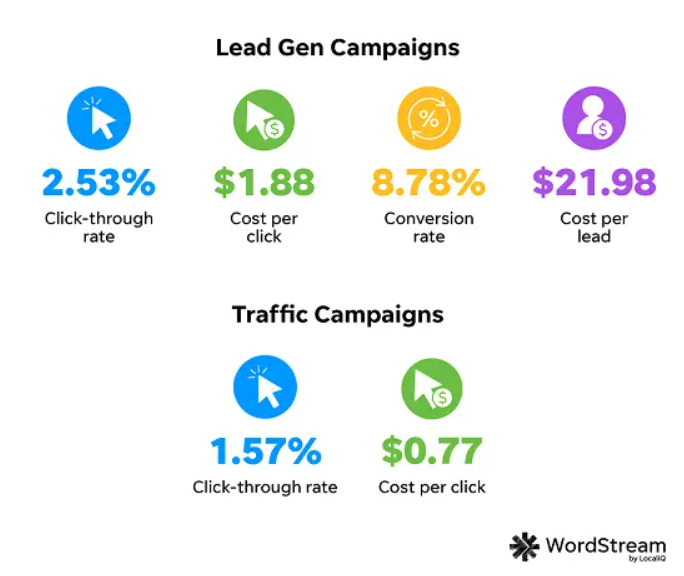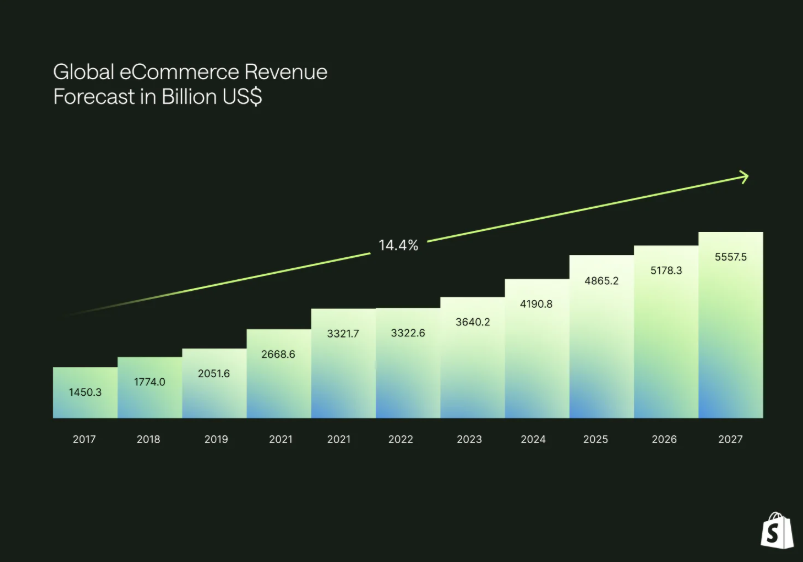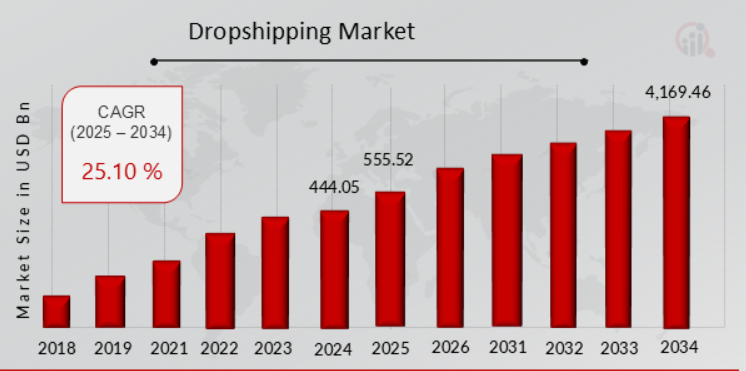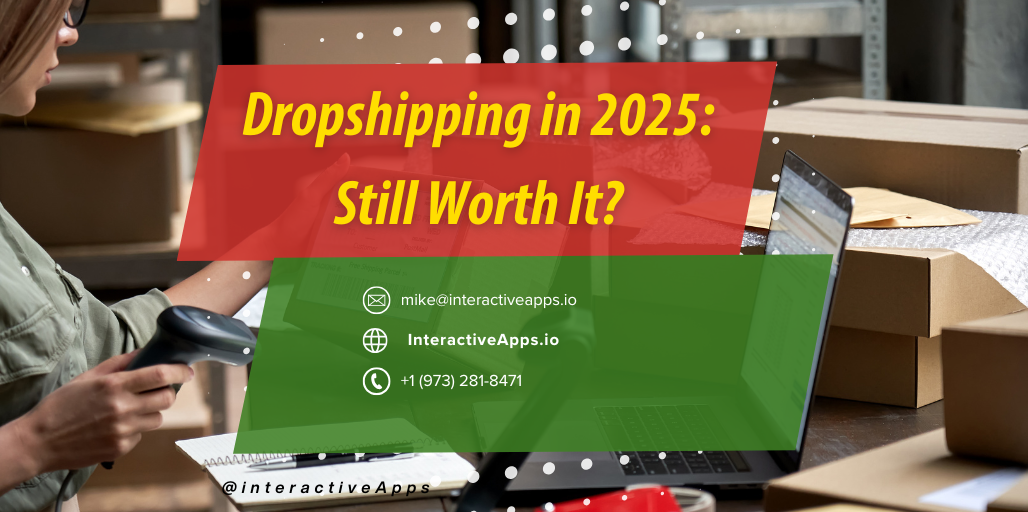Dropshipping has been a buzzword for years. From side hustlers to full-time eCommerce pros, everyone’s tried or considered it. But in 2025, with so many changes in tech, online shopping, and customer expectations, is dropshipping still a solid path? Or has the model passed its prime?
Let’s break it all down. Real facts. Real numbers. No fluff.
What Is Dropshipping (Quick Reminder)
The dropshipping model is simple. A store sells products online without keeping them in stock. When someone buys something, the store sends the order to a supplier. The supplier ships it directly to the customer.
It sounds easy. It used to be easy.
Why It Worked So Well in the Past
Back in the late 2010s and early 2020s, a few things made dropshipping really attractive:
- Low startup cost: No need to buy inventory upfront.
- Low risk: No unsold stock piling up.
- Huge supplier networks: Especially from China-based platforms like AliExpress.
- Growing online shopping habits: More people were getting used to buying online.
Platforms like Shopify, WooCommerce, and Oberlo make it dead simple to launch a store in a day. Social media ads were cheap. Facebook and Instagram algorithms actually worked for small brands. A viral product could make someone rich overnight.
But the landscape has shifted.
What Changed by 2025?
Here’s the thing. Dropshipping hasn’t died, but it’s definitely not the same game. A few key things changed:
1. Customer Expectations
Consumers got smarter. Amazon set the bar high. People expect 2-day shipping, real tracking updates, responsive customer service, and easy returns. Most dropshippers can’t offer that. Especially those shipping from Asia with 15-30 day delivery windows.
2. Advertising Costs
Back in 2016, a Facebook ad could reach thousands for a few dollars. Today, the average cost per click on Facebook is around $1.88, according to WordStream’s 2025 data. It used to be under 50 cents.

That’s a massive jump. New stores now burn through ad budgets just to test products. Only those with deep pockets or smart funnels survive.
3. Shipping Delays and Import Regulations
Post-pandemic changes in logistics, stricter customs checks, and political trade shifts have made global shipping slower and more expensive. A 2025 Shopify merchant report found average international shipping times rose by 28% compared to 2020.
4. Competition
Too many people started selling the same products. Search “LED galaxy projector” or “posture corrector” on Google, and hundreds of identical stores pop up. Many use the same images, descriptions, and prices.
Standing out is harder than ever. Branding, originality, and trust matter now.
Is Anyone Still Making Money With Dropshipping?
Yes, but it looks different.
A survey by Oberlo in January 2025 showed that only 7% of new dropshipping stores were profitable in their first 6 months. That sounds rough, but it doesn’t mean the model is dead. It just means the old plug-and-play method is outdated.
Let’s look at who’s still winning.
The Modern Dropshipper in 2025
The ones doing well with dropshipping today follow a new playbook. These are some traits they share:
1. Private Labeling and Branding
They don’t just resell generic products. They white-label items or create custom packaging. Some even print their own logos or create limited-edition versions.
2. Faster Shipping via Local Warehouses
Smart dropshippers now use fulfillment centers in the U.S., UK, or EU. Services like ShipBob, Zendrop Pro, and CJdropshipping’s global warehouses help cut delivery time to under 7 days.
3. Fewer Products, Better Offers
Instead of loading a store with 100 random gadgets, they focus on 1 to 5 high-converting products. They create full landing pages with storytelling, lifestyle photos, and bundles.
4. Smarter Marketing
They build email lists and run TikTok ads with user-generated videos. They use influencers who match the niche and build communities instead of relying only on Facebook.
The Rise of TikTok and Social Commerce
TikTok exploded as a sales channel. In 2024, Shopify reported over $5 billion in TikTok-driven sales, and the number is rising. Products that go viral on TikTok (think peel-off face masks, desk toys, mini blenders) can sell out fast—if the shipping and experience don’t suck.
Furthermore, the global e-commerce market is expected to reach $4.8 trillion in 2025, according to the Shopify 2024 report.

Profits: What Does the Math Look Like?
Let’s break down an example from a real 2025 case study.
A store sells a mini blender for $34.99.
- Product cost from supplier: $12
- Shipping via US warehouse: $5
- Packaging and branding: $2
- Ads per sale (average): $9
- Transaction fees and other costs: $3
Total cost per sale: $31
Profit per sale: $3.99
That’s not great. But…
When that same brand moved to a subscription bundle, selling three blenders for $99 with upsells and email follow-ups, the average profit per customer jumped to $24.50. Volume and branding made the difference.
Platforms and Tools That Help in 2025
Several tools have evolved to help drop shippers win in this new age. These are the most mentioned in recent eCommerce reports:
- Shopify: Still dominant. Over 1.75 million merchants globally.
- DSers: Official AliExpress partner for order management.
- Zendrop and CJdropshipping: Known for faster global fulfillment.
- Sell The Trend and Ecomhunt: Product research tools.
- Tidio and Gorgias: Customer support automation.
All these cut down on headaches and help store owners stay competitive.
What About Amazon and Walmart?
Many ex-drop shippers now use Amazon FBA or Walmart Marketplace instead. Why?
- Built-in traffic.
- Faster shipping via domestic warehouses.
- Trust factor.
But the barrier to entry is higher. Strict product guidelines. More fees. More competition.
Still, 54% of Amazon sellers in 2024 used a modified dropshipping model. They test products with dropshipping first, then scale using private label and FBA once they see traction.
Pros and Cons in 2025
Let’s not sugarcoat anything.
Pros
- Low initial investment.
- Still a good way to test product ideas.
- Can scale quickly with the right system.
- Doesn’t need a physical location or warehouse.
Cons
- Thin margins unless branded and optimized.
- Shipping and returns are still messy for most.
- Customer service can get overwhelming.
- Scaling is expensive without deep ad skills.
Who Should Still Try Dropshipping in 2025?
It’s not for everyone. But for certain folks, it can still be a smart move:
- Content creators who can drive their own traffic.
- Designers who want to build niche brands.
- Entrepreneurs test product-market fit before going big.
- People with time to learn marketing, not chasing fast cash.
Dropshipping is no longer a lottery ticket. It’s a business model. That means hard work, testing, tweaking, and adapting. According to a report by Market Research Future, the dropshipping market was worth about $444 billion in 2024. It’s expected to grow to $555.5 billion in 2025 and reach around $4,169 billion by 2034.

What Does the Future Look Like?
A few trends will shape the next phase of dropshipping:
1. AI-Powered Personalization
Stores using AI to recommend the right products, adjust pricing in real-time, or personalize landing pages are winning more sales. Shopify and BigCommerce are already adding these features.
2. Greener Products
Eco-conscious shoppers now look for sustainability. Dropshippers offering biodegradable packaging or recycled materials see better retention.
3. Localized Warehousing
Micro-warehouses in major cities are on the rise. It’s how small brands compete with Amazon-level speed.
4. More Niche Brands, Fewer General Stores
Shoppers want to feel something when they buy. Brands that stand for a cause or a lifestyle win trust and loyalty. General gadget stores without soul? Not so much.
Final Thoughts: Is Dropshipping Still Worth It?
Yes, if approached like a real business. No, if treated like a shortcut to easy money.
In 2025, dropshipping is more challenging. But it’s also more rewarding for those who adapt. The model works. The rules just changed.
Treat your store like a brand. Invest in speed, trust, and quality. Focus on fewer, better products. Learn how to market without burning cash. That’s how people win today.
If you’re thinking of starting, start small. Start smart. Use data. Expect a slow grind. But know this—dropshipping in 2025 still works… just not the way it used to.



